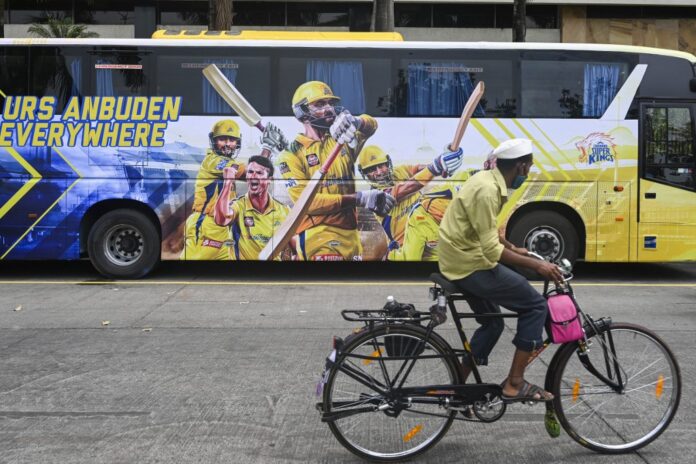The bonanza that is the Indian Premier League is back in town or, rather, Mumbai and Pune. As highlighted last week, there is an unprecedented amount of professional international cricket taking place at present. Attention is likely to be deflected away from it once the first IPL match opens on March 26.
Now entering its 15th edition, the IPL is bigger than ever before, having increased its franchises from eight to 10 and sharpened its ability to generate money.
Under the format chosen for the 2022 tournament, 74 matches will be played, with the final scheduled for May 29. The 10 teams have been divided into two groups of five. In the group stage, each team will play 14 matches. That will be achieved by playing each team within the same group twice, four teams in the other group once, and a paired team in the other group twice.
The rather convoluted format is similar to one used in 2011, when the group placings were made through seedings rather than random selection. Nevertheless, the process has managed to pair five-time winners, Mumbai Indians, in Group A with four-time winners, Chennai Super Kings, in Group B. The two new teams, Lucknow Super Giants and Gujarat Titans have also been paired. Last year, 60 matches were played and, had the previous double round-robin format been retained, 90 matches would have been generated.
Even the IPL organizers seemed to have baulked at that number. As an outside observer, with no loyalty to any of the teams, I have found it difficult to keep interest in the tournament between its early stages and the finals. There are too many games in a short space of time, all being played in the same frenetic manner. It must be different for cricket-loving Indians who have team loyalty, although the opportunity for them to watch the matches in person is limited.
Both the Board of Control for Cricket in India and the franchisees wanted the 2022 tournament to be held in India, as opposed to 2020 and part of 2021, when it was switched to the UAE. As a compromise, they made the deliberate decision to restrict the venues to Mumbai and Pune, eliminating air travel between the 10 host cities and enabling road transport on the Mumbai-Pune axis.
However, it does mean that supporters in other cities will have limited or no opportunity to watch their teams perform live. Furthermore, with COVID-19 control in mind, Maharashtra state is permitting only a quarter of spectator capacity to be used in the four venues in Mumbai and Pune. It is the BCCI’s hope that it will be possible for crowd capacity to be raised as the tournament progresses. Under current permissions, the maximum number of spectators allowed at the venues will be between 7,000 and 11,000.
In another measure designed to reduce the tournament’s COVID-19 risk, protocol breaches by players and team officials will attract serious sanctions. These range from one-match suspensions to seven-day quarantine and, at worst, a ban from the tournament.
A bubble breach by a family member of a player or match official will attract equally serious sanctions. If a team knowingly allows an outsider into the team bubble, it could face a fine of up to 10 million Indian rupees ($130,000) for the first lapse. Subsequent lapses could lead to a deduction of points.
Already, there have been several high-profile withdrawals of overseas players who do not wish to endure continuing cricket bubble-life. This factor, perhaps prompted by the longer span of the 2022 tournament, seems to have outweighed their foregoing of significant income. Conversely, five South Africans have chosen the IPL over playing for their country.
The stringent COVID-19-related security measures have also been designed to protect income. As discussed in an earlier column, the IPL is now sponsored by Tata in a two-year deal worth $90 million. Current broadcasting rights, held on a five-year, $2.6 billion contract by the Disney-owned Star Sports, are due to expire after IPL 2022. Invitations to tender for the next cycle, 2023 to 2027, have been trailed since October.
In an interview in December, the BCCI’s president said that the IPL could expect to attract bids of $5.2 billion, thereby providing the basis to take the sport to greater heights.
If subsequent rumors are true that Amazon and Reliance Industries will enter the fray to compete with media groups, Sony, and Disney, the figure may run to $6.5 billion.
IPL cricket has become the cockpit in which two companies seeking to grow in the e-commerce market and build up their digital platforms will compete with or, maybe, combine with traditional media. This provides the BCCI with the opportunity to shape its tender and generate even greater revenue.
In the first half of IPL 2021, played in India, matches reached 350 million viewers. These numbers hold vast appeal for both TV and over-the-top advertising, which is delivered directly to viewers via streaming services that bypass traditional TV providers. I have tried to watch IPL matches but am, literally, turned off by the volume and frequency of advertisements. I accept that I am not the target market, but I do question how much further this model can grow and whether the anticipated spike in the costs of acquiring media rights is sustainable.
This also has to be placed within the context of the BCCI’s financial management policies. What is it going to do with its surpluses? The level of these is difficult to ascertain. The most recent financial statements on the board’s website are for 2016/2017. It has historical disputes to settle, including tax liabilities, for which significant set-a-side provisions have been made.
The BCCI orchestrates the most spectacular, richest, cricket show in the world, turning many cricketers into millionaires. Before it moves onto even greater heights, whatever they may be, it would be reassuring to have greater certainty that its behaviors have probity. It has disrupted cricket’s old model and has the power to do so again.

